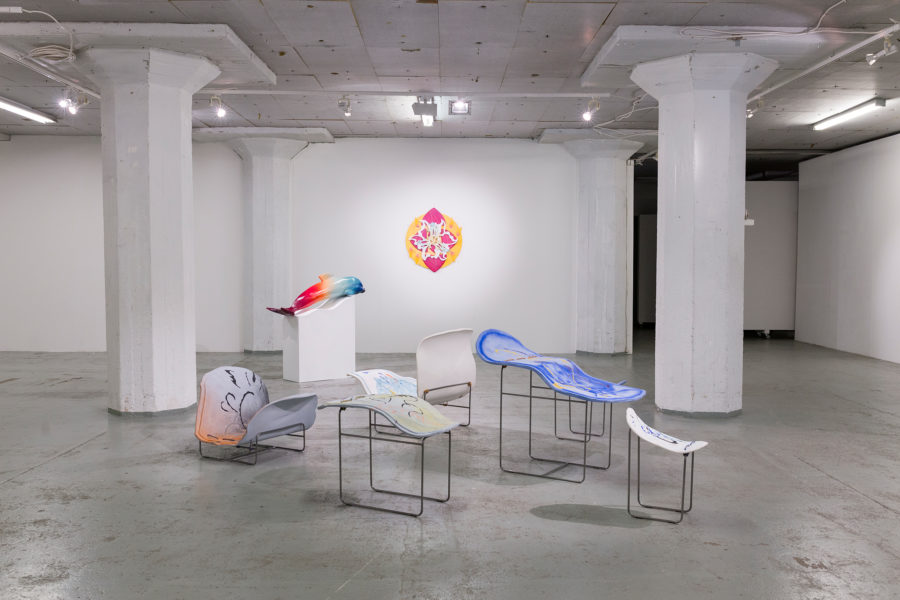
2017||
Gallery view at Gallery Huuto||Photography by Emma Sarpaniemi.
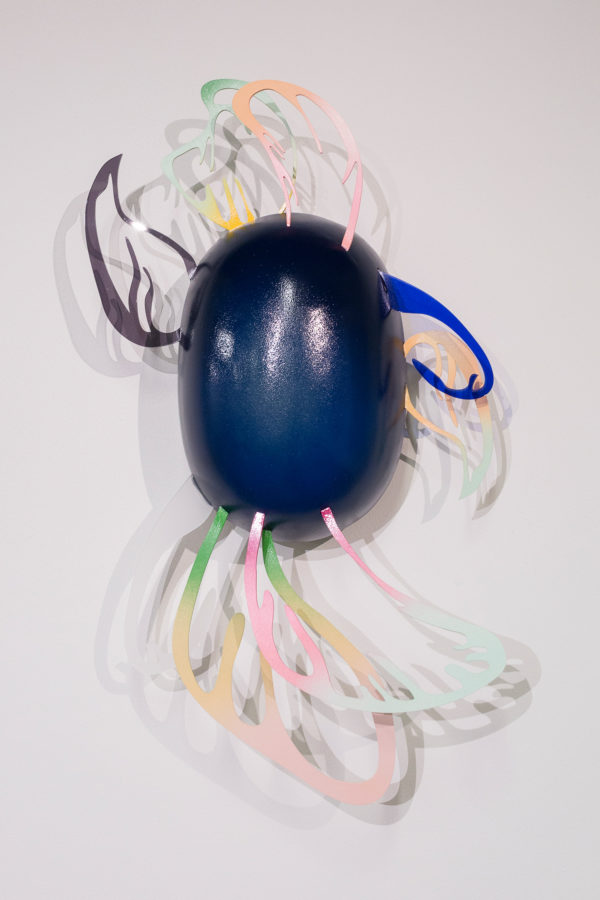
MOONY|
Wood, spray paint, acrylic|
85 x 45 x 20 cm||Photography by Emma Sarpaniemi.
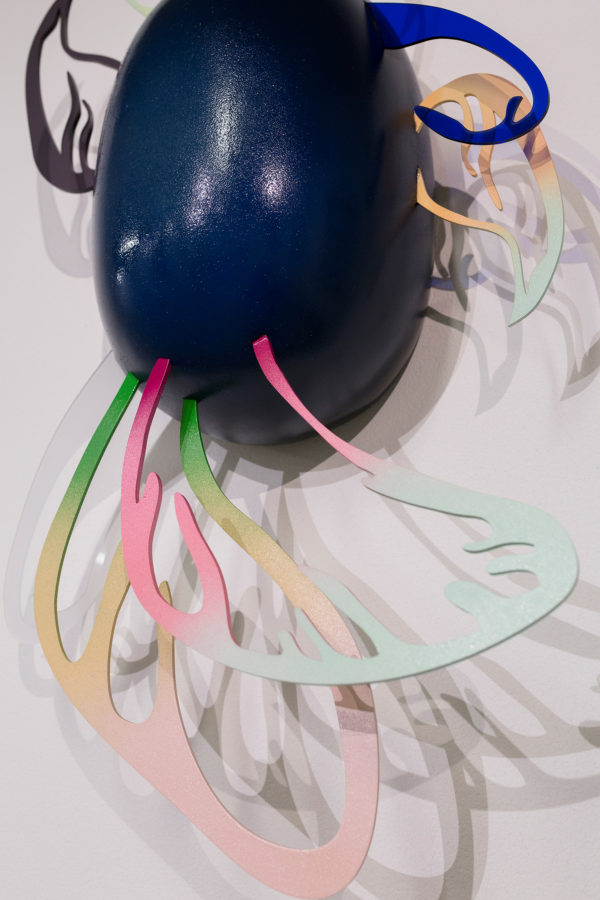
Detail of the work||Photography by Emma Sarpaniemi.
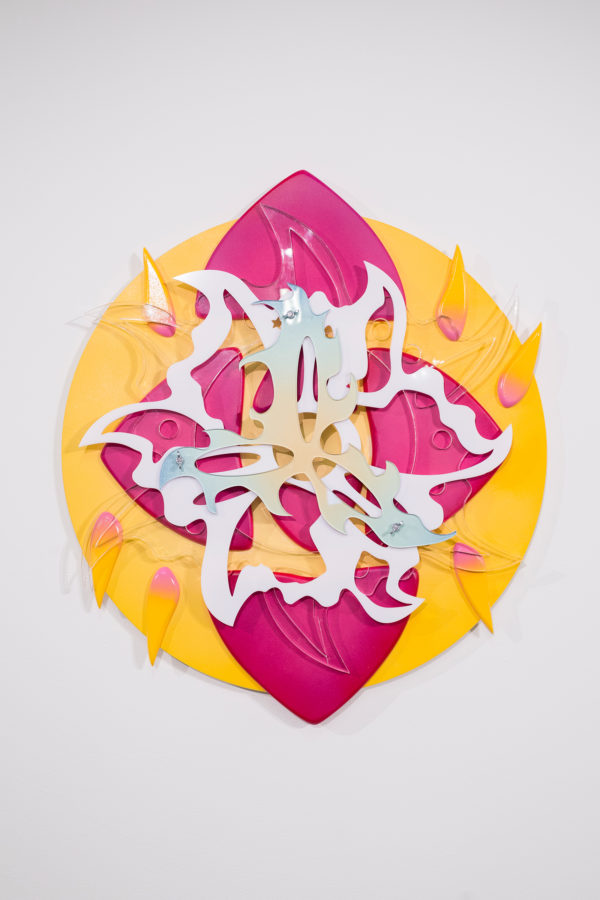
SUN|
Wood, spray paint, acrylic, steel|
85 x 90 x 6 cm||Photography by Emma Sarpaniemi.
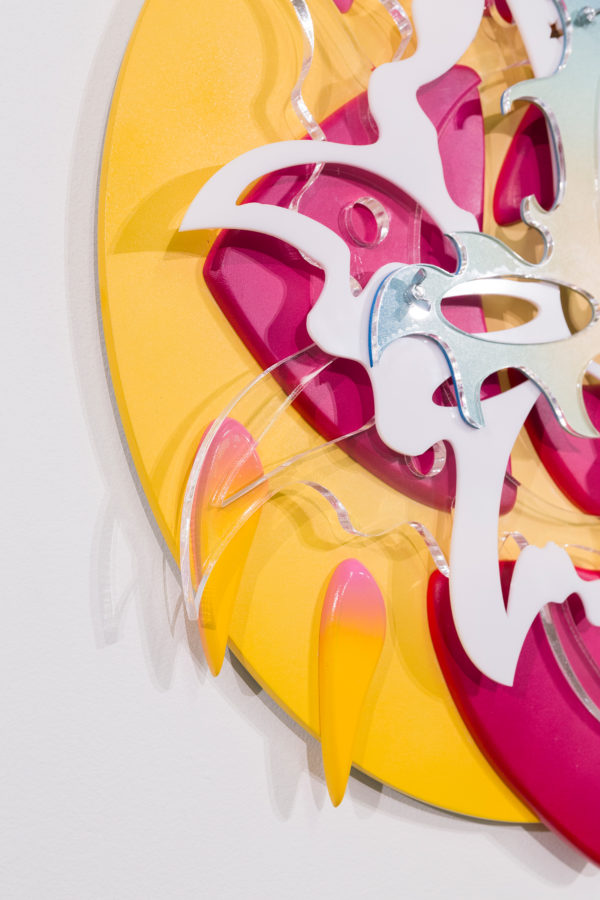
Detail of the work||Photography by Emma Sarpaniemi.
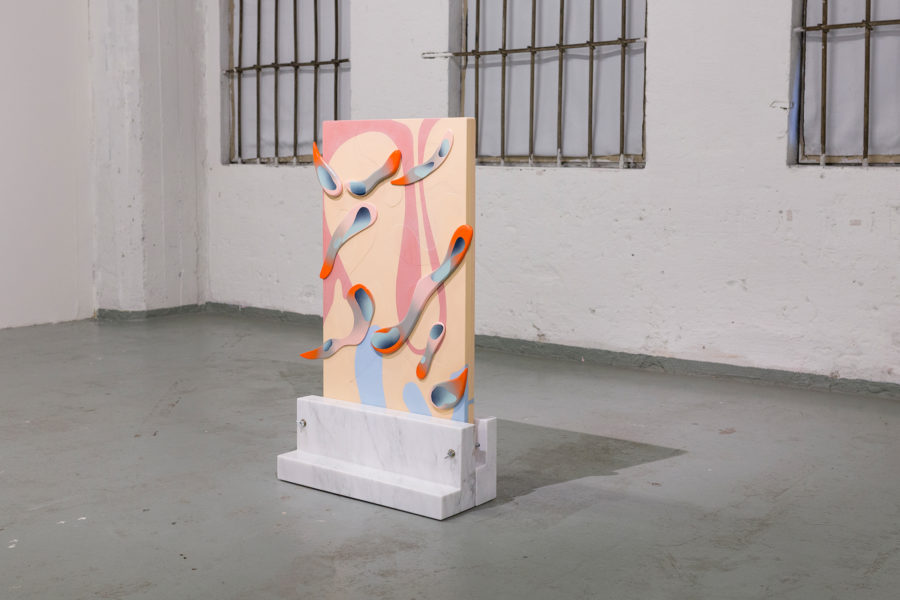
AIR|
Colored concrete, wood, spray paint, marble, steel|
90 x 55 x 21 cm||Photography by Emma Sarpaniemi.

DELFU|
Wood, spray paint, varnish|
125 x 40 x 35 cm||Photography by Emma Sarpaniemi.
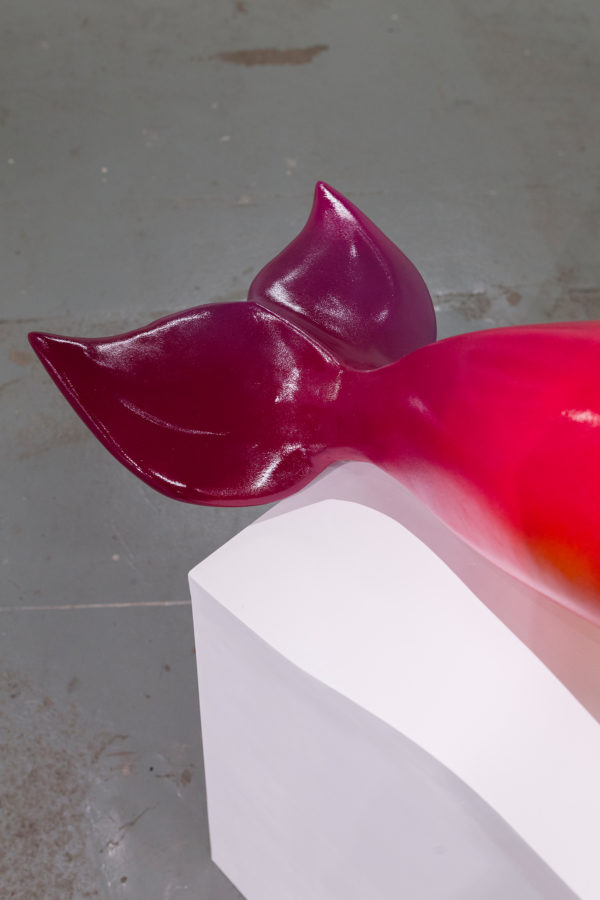
Detail of the work||Photography by Emma Sarpaniemi.
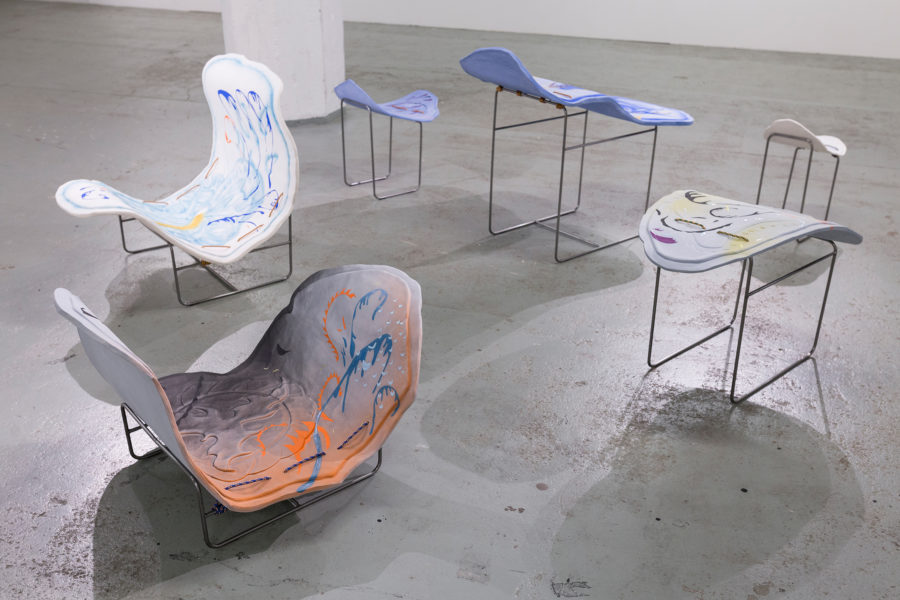
SEA | (installation consisting of six sculptures) |
Paper clay, glaze, steel, paracord|
340 x 270 x 85 cm||Photography by Emma Sarpaniemi.
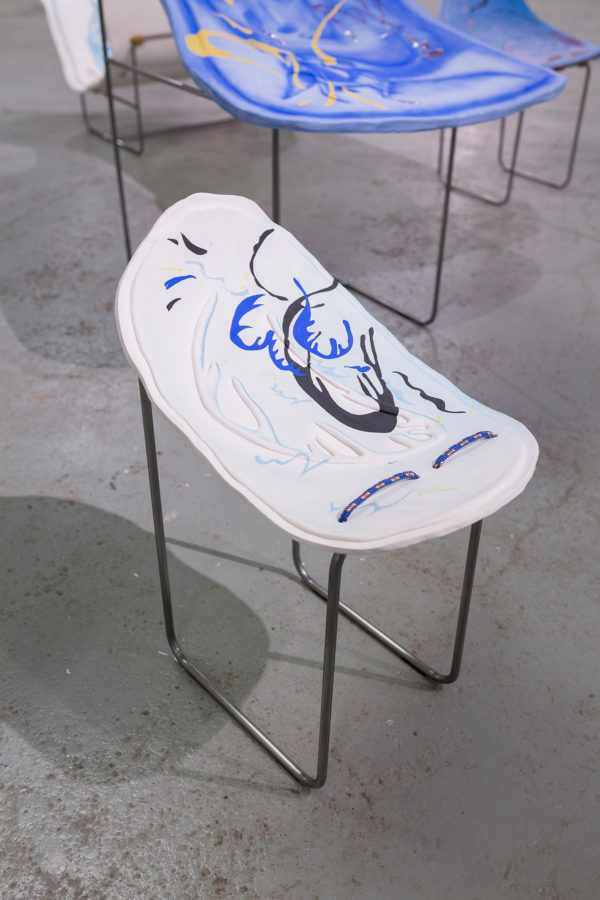
Detail of the work||Photography by Emma Sarpaniemi.
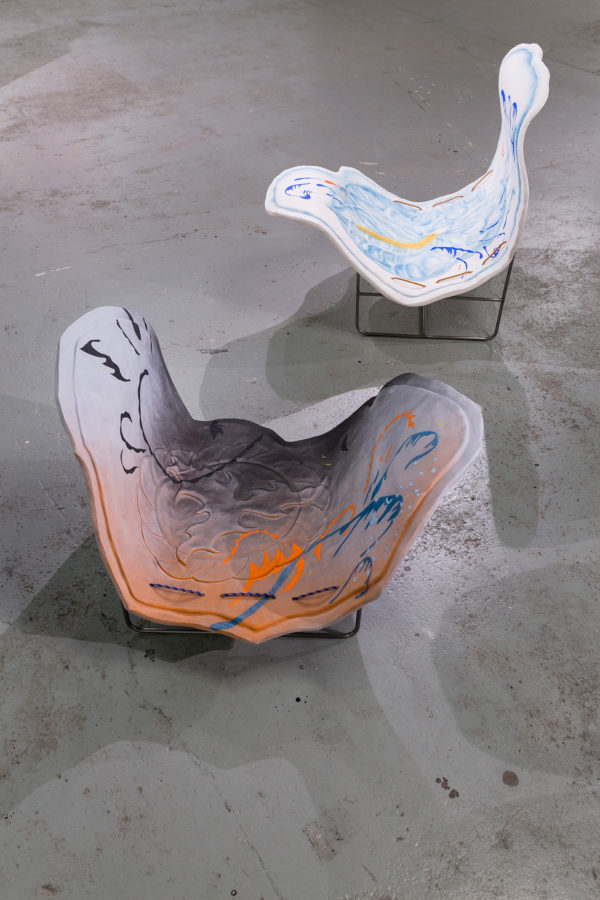
Detail of the work||Photography by Emma Sarpaniemi.
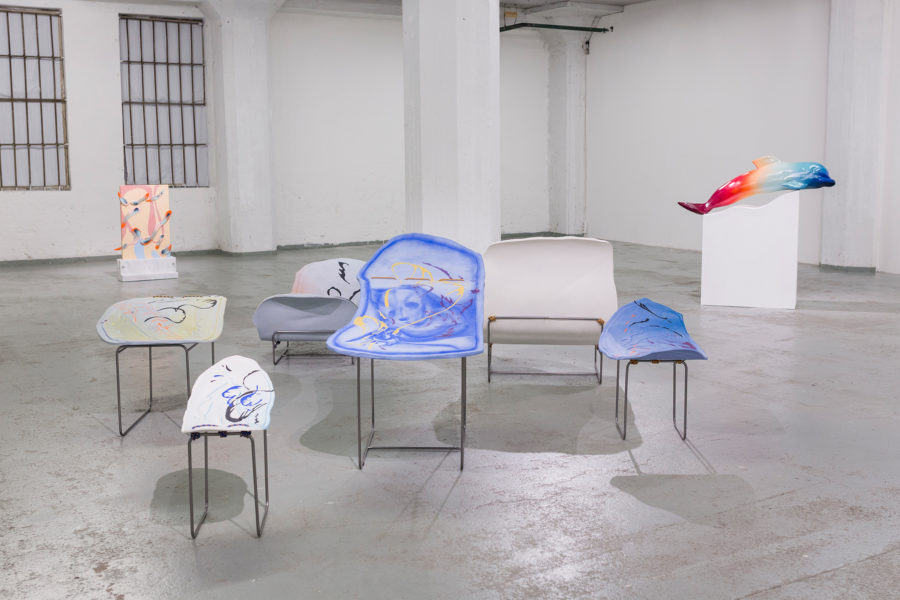
Gallery view at Gallery Huuto||Photography by Emma Sarpaniemi.
In the beginning of the process I started to sculpt “something” out of wood with my chainsaw in the forest, without really knowing what it would become. Learning the nature of the new material seemed liberating. As I worked in an isolated environment and without a clear plan, it gave me the opportunity to focus entirely on the creating and constructing in its entirety, but also forced me to deal with the relationship with my own artistic identity. Sculpting became a method to produce something that I can hardly describe in words, and after a while, all of this absurdity started to make sense – at least in my head. I started to dream about Delfu’s world, I imagined her swimming in the sea, surrounded by glossy and colorful surfaces, and in order to make it actually happen, I needed to work on each sculpture to look like there’s no human touch. So all the countless hours spent on those sculptures needed to be hidden so that Delfu and her world would become independent.
The exhibition Delfu is about an illusion of the rational world and the paradox of the artistic work. In the exhibition text, written by Lauri Alaviitala, referred to Albert Camus’ essay dealing the Myth of Sisyphus (Albert Camus: The Myth of Sisyphus [Le Mythe de Sisyphe, 1942], English translation Justin O’Brien, 1955 ). In Camus’ essay, he concludes that “One must imagine Sisyphus happy”, and in Lauri’s text the work of Sisyphus is compared to the artistic work. “A perfect sculpture does not show the hours worked, the versions created, the learning of the nature of the material, the experiments that have been rejected – the fallen boulders. Being sharp-eyed can be torturous, but only continuing one’s work will make one’s victory complete. Every time Sisyphus follows his boulder down into the plain, he becomes more powerful than the boulder.”
The paradox comes when the reality steps in, and I once again realise the absurdity of my own work. One could say that Sisyphus’ fate is everyone’s fate: the workman of today works every day of his life at the same tasks, and this fate is no less absurd.
The exhibition Delfu was exhibited at Gallery Huuto, Jätkä 1. in August 2017.
